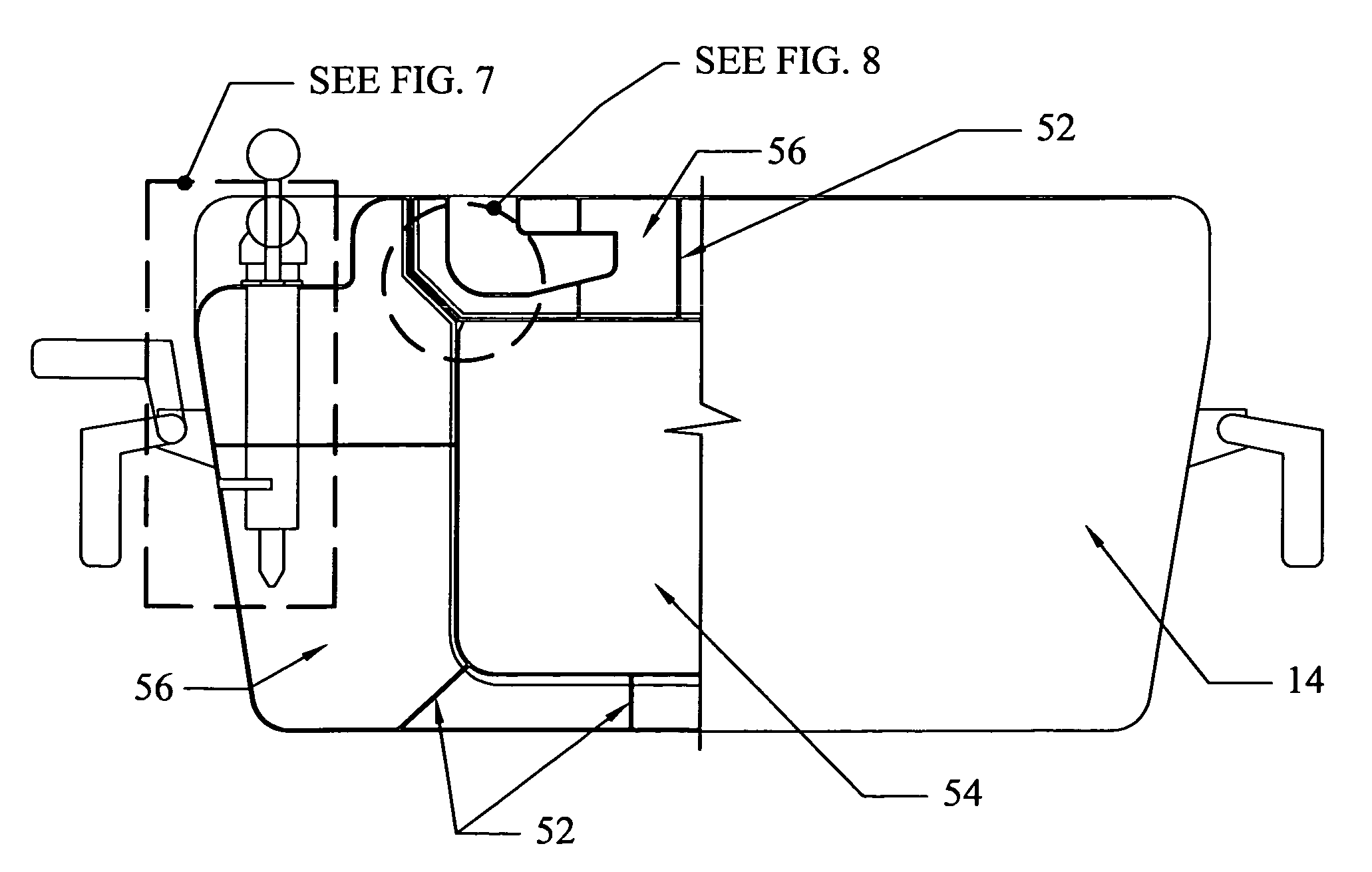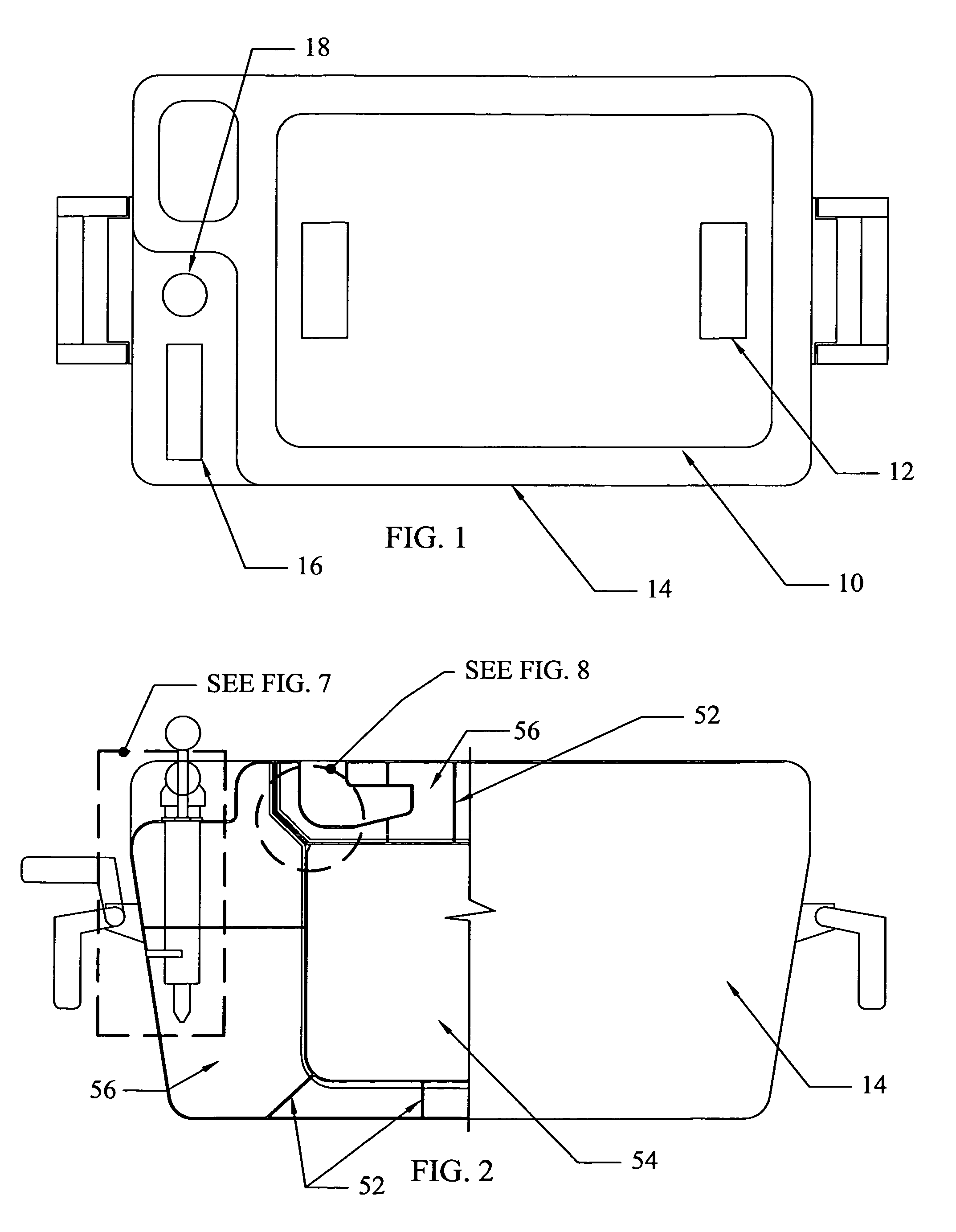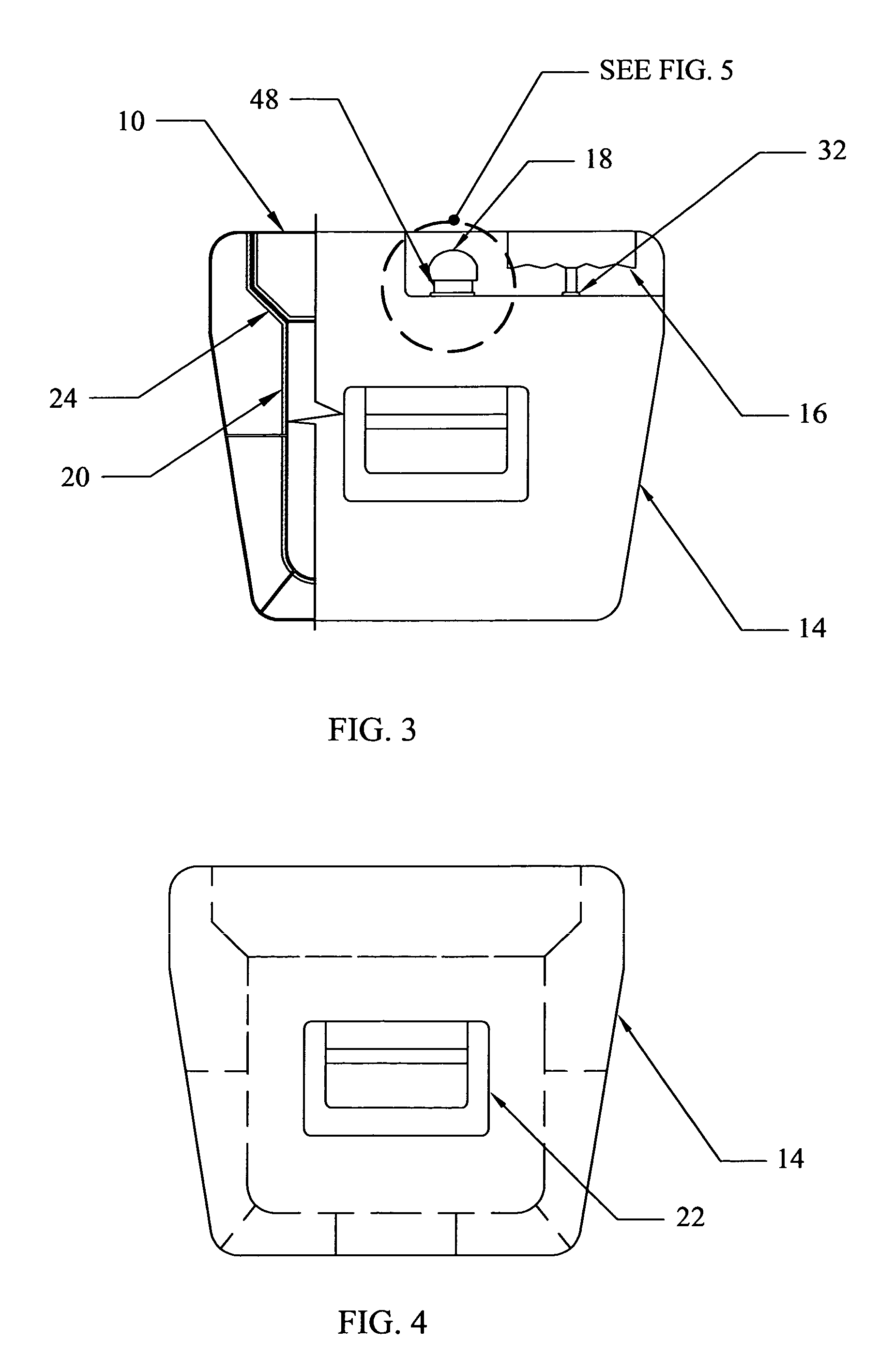Vacuum cooler
a cooler and vacuum technology, applied in the field of vacuum coolers, can solve the problems of prolonging the effectiveness of the cooler, addressing no efficient way of reducing the effect of radiant, convective or conducive heat, and removing the decomposition effect of oxygen from the product storage area
- Summary
- Abstract
- Description
- Claims
- Application Information
AI Technical Summary
Benefits of technology
Problems solved by technology
Method used
Image
Examples
Embodiment Construction
[0050]Various embodiments of the invention are described by reference to the drawings in which like numerals are employed to designate like parts. Various items of equipment that could be additionally employed to enhance functionality and performance such as fittings, mountings, sensors (e.g. temperature gages), etc., have been omitted to simplify the description. However, such conventional equipment and its applications are known to those of skill in the art, and such equipment can be employed as desired. Moreover, although the invention is described below in the context of the transport and storage of products that are sensitive to heat transfer and degradation due to oxygen present atmosphere, those skilled in the art will recognize that the invention has applicability to the transport and / or storage of many different refrigerated or frozen products or items, e.g. medical supplies, biological material, chemicals, and the like.
[0051]FIGS. 1 and 2 describe one embodiment of the coo...
PUM
 Login to View More
Login to View More Abstract
Description
Claims
Application Information
 Login to View More
Login to View More - R&D
- Intellectual Property
- Life Sciences
- Materials
- Tech Scout
- Unparalleled Data Quality
- Higher Quality Content
- 60% Fewer Hallucinations
Browse by: Latest US Patents, China's latest patents, Technical Efficacy Thesaurus, Application Domain, Technology Topic, Popular Technical Reports.
© 2025 PatSnap. All rights reserved.Legal|Privacy policy|Modern Slavery Act Transparency Statement|Sitemap|About US| Contact US: help@patsnap.com



